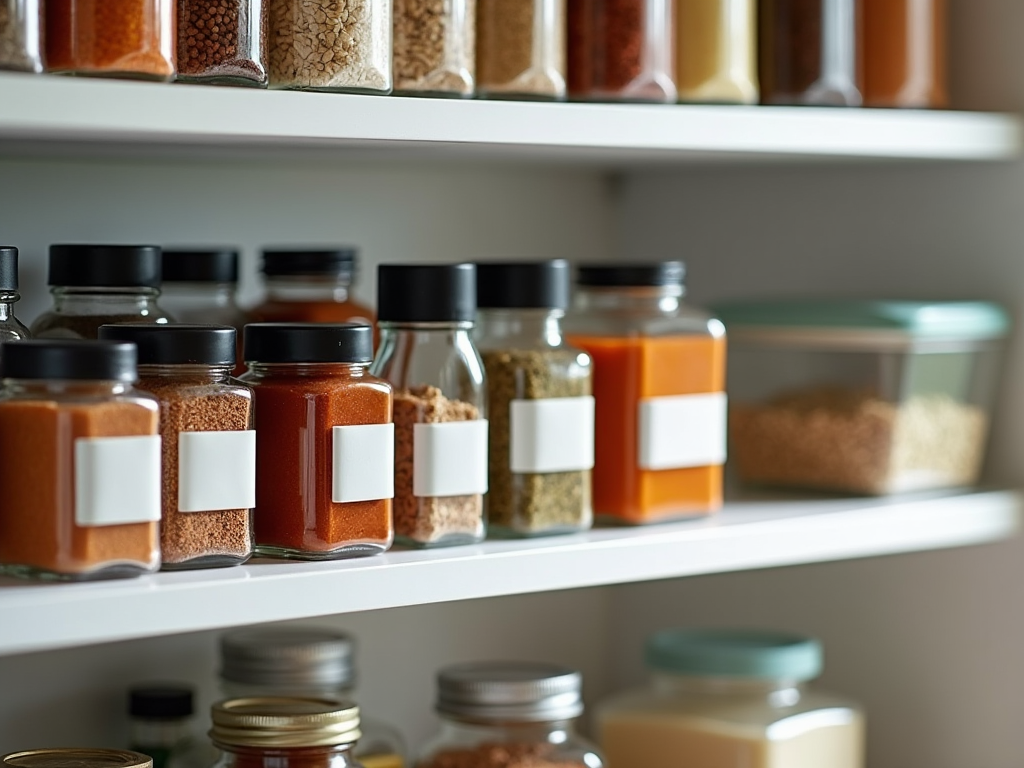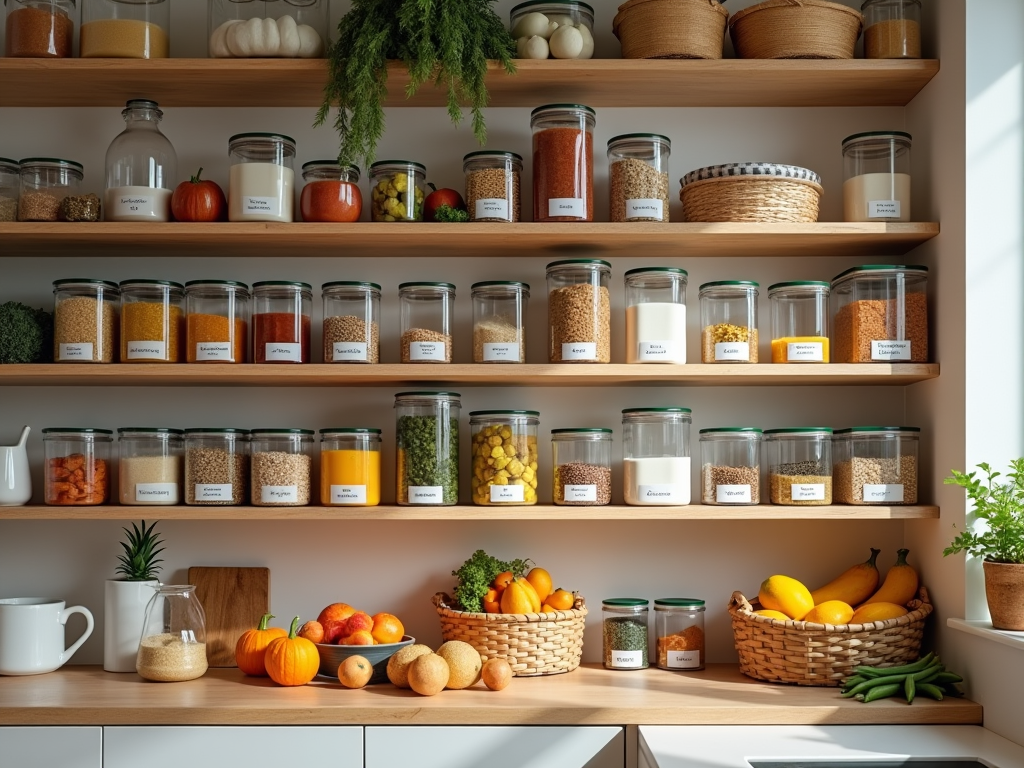Imagine opening your pantry and witnessing a perfectly arranged landscape of food, all meticulously categorized and easy to access. An organized pantry is not just a feast for the eyes; it’s a functional space that can transform your cooking experience. Instead of diving into chaos every time you need something, you can easily grab what you need, thanks to a well-structured layout. The key is to not only set it up initially but also establish a routine that keeps it in pristine condition. With an organized pantry, you’ll reduce food waste, save time, and make meal preparation an enjoyable process.
Getting started involves evaluating your current pantry situation to see what is and isn’t working. You will want to clear out expired items and categorize the remaining foods effectively. As you embark on this journey, think about storage solutions that cater specifically to your needs. Coupled with a functional layout, these elements work together to create a pantry that truly functions for you. But the journey doesn’t end there; maintaining this organization is crucial for sustainable efficiency.
Understanding the Importance of an Organized Pantry

Having an organized pantry simplifies your life in numerous ways. You’ll find that cooking becomes less daunting and more enjoyable when everything is in its place. Furthermore, knowing what you have can help minimize grocery waste, as you won’t accidentally purchase items you already own. An organized pantry fosters creativity in the kitchen because you can easily spot ingredients that spark new meal ideas. And let’s not forget the appealing aesthetic that comes with a tidy pantry—it’s a small accomplishment that can make a big difference in the ambiance of your home. Ultimately, the goal is to set up a system that serves you and your cooking habits effectively.
Assessing Your Current Pantry Situation

Begin the organization journey by taking stock of what’s currently in your pantry. This step is crucial, as it allows you to clearly see what works and what could be improved. Grab a notebook and jot down an inventory of items, noting any expired products. This can also serve as a guideline for what you may need to purchase in the future. Once you’ve assessed the situation, it’s time to roll up your sleeves and clear out everything.
- Remove everything from the pantry.
- Toss expired items and donate non-perishables you no longer plan to use.
- Group similar items together (canned goods, snacks, baking supplies, etc.).
By categorizing your items, you create mental associations that will help in the organization process. This approach reduces the time spent searching for items and helps in identifying what truly needs to be stocked up. As a visual aid, it might be useful to create a list of the categories you will be using. This can guide your next steps in selecting storage solutions.
Choosing the Right Storage Solutions
Choosing appropriate storage solutions is essential for maintaining your pantry’s organization. The right containers and shelving can make a significant difference in both aesthetic and functionality. You may want to consider the following types of containers:
- Clear bins: For easy visibility of contents.
- Airtight containers: To keep items fresh and secure.
- Labels: To quickly identify items.
- Stackable shelves: For maximizing vertical space.
These storage solutions not only simplify the process of finding items but also help in keeping your pantry clutter-free. Remember, the primary aim is to select what facilitates easy access and keeps items preserved efficiently. It can be tempting to overlook the aesthetic side, but mixing style with practicality can elevate your pantry to a new level.
Creating a Functional Layout
The layout you choose can either enhance or detract from the organization you worked hard to establish. Start by thinking about the zones you need to create for various items. A thoughtful layout will save time and make the cooking process enjoyable. A popular method is to place everyday cooking essentials at eye level. You can also consider the needs of your household members as you organize. For instance, if you have kids, make sure snacks are easily accessible to them.
| Zone | Contents |
|---|---|
| Everyday Cooking Essentials | Spices, oils, and frequently used ingredients. |
| Baking Supplies | Flour, sugar, and baking soda. |
| Snacks | Chips, granola bars, and dried fruits. |
| Bulk Items | Pasta, rice, or canned goods. |
Each zone serves a distinct purpose and helps streamline the cooking and baking experience. This clear demarcation will also aid in teaching others where to find items and where to return them, nurturing a communal responsibility for maintaining the organization.
Maintaining Your Organized Pantry
Once your pantry is organized, it’s essential to have a plan for ongoing maintenance. Regular upkeep will ensure that your hard work doesn’t go to waste. Set a schedule for routine checks, ideally every month. During these check-ins, inspect your inventory and update your supplies accordingly. This practice will help you avoid overbuying, which can lead to clutter and waste. By re-evaluating your pantry seasonally, you can adapt to changing cooking habits as well.
- Set a schedule for routine checks (monthly or quarterly).
- Update your inventory regularly to avoid overbuying.
- Reorganize seasonally to adapt to changing needs.
With these strategies, maintaining your organized pantry will become second nature. Each time you step into your kitchen, you’ll appreciate the effort put into creating such an efficient space.
Conclusion
An organized pantry significantly enhances your cooking experience while contributing to a more sustainable lifestyle. By implementing a system tailored to your needs, you not only streamline your culinary efforts but also create an aesthetically pleasing environment. The strategies discussed here, along with regular maintenance, will ensure that your pantry continues to serve you effectively in the long run. Remember, a well-organized pantry is not just about looks; it’s about functionality and accessibility.
Frequently Asked Questions
- What are the best containers for storing pantry items? Clear bins and airtight containers are ideal as they help keep items fresh and are easy to identify.
- How often should I clean my pantry? It’s recommended to check your pantry every month and do a deep clean every three to six months.
- What should I do with expired food? Dispose of expired food items to prevent contamination and make room for fresh foods.
- Can I use my pantry for non-food items? Yes, you can store kitchen supplies, cookbooks, or even pet food, as long as it’s organized and doesn’t compromise food safety.
- Is it necessary to label everything? While not every item needs a label, labeling helps to quickly identify less frequently used items and maintain organization.


